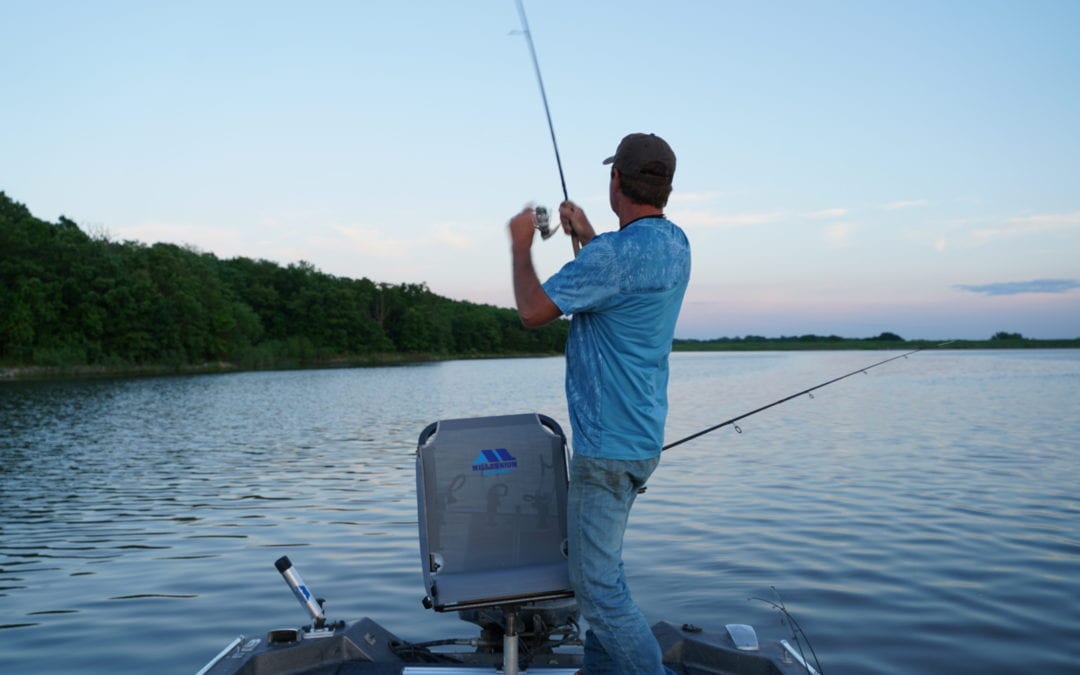When it comes to boating equipment, boat seats aren’t always known to be the most durable. There can tear. There’s moldy foam. There’s fading from the sun and dampness from the rain. Next thing you know, you have a whole bunch of money spent on replacement seats over the years. We understand. Once a boat seat rips, people can be cautious to go out and spend big bucks on something that just doesn’t seem to last a long time.
There are three main factors that result in the destruction of a new boat seat:
- Made of plastic. There are boat seats on the market that are made entirely plastic, and seats that only have a plastic frame. Plastic is a problem when it comes to boat seats. There are just too many factors stacked up against it. For one, plastic gets heated up and cooled down easily. While it’s not necessarily a material that will stretch, it experiences temperature extremes. Have you ever noticed that when you sit down on a plastic seat, the temperature of the seat is more intense in comparison to the air? For example, if it’s cold outside, the seat is frigid. If it’s hot outside, the seat is blistering. All of these changes wear on the plastic, whether the seat or the frame, and weakens the seat.
- Mold and Mildew. The next seat-weakening agent is mold and mildew. While this is not as prominent of a problem in hard-metal seats, cloth and upholstered seats generally attract more mold than other seats when they’re not treated. Mold and mildew aren’t only limited to the outside of a boat seat, either. It is actually found more often underneath water-resistant upholstery. Even the smallest crack can expose the inside of the cushion, which is actually (usually) just a big sponge.This soaks up all available water, and you’re left with a soppy, split-open, smelly boat seat.
- UV Rays. Ultraviolet rays are another one of Mother Nature’s characteristics that will shred a seat. The affects of ultraviolet rays on humans can be intense, with studies showing large amounts of UV ray exposure can lead to certain cancers. More mild side-affects of human excessive UV exposure include fatigue, dehydration and fainting. Now imagine a boat seat that is exposed to UV rays for 14 hours per day, often year-round. The powerful rays fade the seat and weakens the material. Boat seats end up shredded and ragged, with holes punched through their pressure points and loose threads everywhere.
How can these issues be fixed? Is there such a thing as a boat seat that will last?
Thanks to Millennium, there are solid options of boat seats that offer significant solutions…and a great boat seat. All three of the crucial elements to a seat that will outlast the elements are present in every Millennium Marine seat.
Why is that, you ask? Well, there are two main reasons.
The first of these is aluminum. The aluminum frame of the boat seats that Millennium makes is not only weather-resistant, but more importantly, it’s temperature-resistant. No matter how hot or cold the weather gets around your boat, the frame of the seat won’t get worn down the way that of a plastic seat would.
The second reason for the long-lasting durability is the treatment system that Millennium utilizes. A special process to repel mold and protect against ultraviolet rays treats all of the fabric in Millennium boat seats. This ensures quality for the consumer…a purchase from Millennium is one that you won’t regret.
Boat seats are constantly exposed to the elements. Wind, rain, snow, hail, extreme temperatures…these are all factors that play in the maintenance and longevity of a boat seat. Even the most immaculate of boat seats can last less than a year if they’re not taken care of properly.
But Millennium’s innovative design ensures that you will get a product that will be with you for years to come. The seats are made for the true outdoorsman, and made to please every customer. That’s confidence that the consumer can count on.

